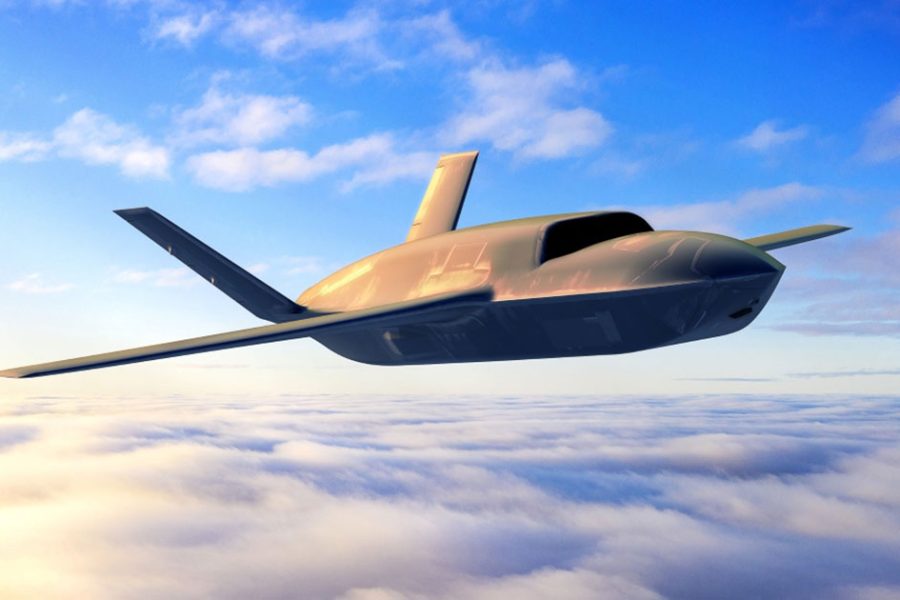The Air Force is already looking past the initial contracts it has awarded for the first autonomous Collaborative Combat Aircraft and is sketching out plans for the second batch of aircraft, Chief of Staff Gen. David W. Allvin said May 7.
The approach is intended to speed the development of new technology and also ensure the there is plenty of competition in the future.
“We want more competition to come in and say, ‘Well, I may not get selected for this particular design, but I know another one’s coming around the corner,’ which is why we had Increment 1 for our Collaborative Combat Aircraft and very strict key performance parameters,” Allvin said. “Then Increment 2, we’re already drawing the concepts up for.”
Allvin outlined the service’s management strategy in an appearance at the Ash Carter Exchange. The conference is being hosted by the Special Competitive Studies Project in honor of the late Ash Carter, who served as secretary of defense from 2015-2017 and focused on heavily improving the Pentagon’s lumbering acquisition structure.
The defense industry—particularly aerospace—has consolidated through mergers and acquisitions and includes just a handful of the handful of large firms. So part of the challenge the Air Force faces is encouraging competition as it pursues cutting-edge technology.
“Technology is allowing us—if we’re willing to bureaucratically adapt to it—it’s allowing us to shift the incentive structure, so that’s what we’re doing with our Collaborative Combat Aircraft,” Allvin said. “We want to start incentivizing design.”
Collaborative Combat Aircraft is an important case study of how the Air Force’s acquisition approach is being applied.
The Air Force recently selected General Atomics, the long-time maker of the service’s drones, and Anduril, a defense startup, to design the first Increment 1 of Collaborative Combat Aircraft. That award, however, is just for the design of the aircraft, and other companies may still try to win the deal to build production aircraft.
The next batch of aircraft offers more possibilities for competition. The Air Force said that the three other finalists—Lockheed Martin, Northrop Grumman, and Boeing—could win contracts for future CCA designs, which may have different features. The service has said it wants at least 1,000 of the new drones to bulk up its fleet.
Some aerospace companies are now wary of the large-priced, fixed-priced contracts the Air Force has awarded for the past few decades. With Collaborative Combat Aircraft, the Air Force is seeking healthy competition from companies—even without mature plans for precisely how CCA will be used and deployed.
“We can also think about how we do things, holding our requirements fast and resisting the temptation to add one more ornament on the tree for another $20 million, etc.,” Allvin said. “This incentive structure that we had given to the aerospace industry about these are going to be long-term commitments, and they’re going to be big procurement programs, and so there’s not going to be very many of them.”
The Air Force, Allvin said, is also thinking about how to exploit autonomy, pointing out Secretary of the Air Force Frank Kendall’s recent ride in an AI-piloted F-16. “We also are standing up an experimental operations unit to understand not only how we’re going to base and sustain it” but other key details as well, he said.
Allvin said the CCA program is not just a new technical program but also represents a cultural shift for the Air Force.
“As we’re looking at leaning into human-machine teaming and developing these collaborative combat aircraft, we’re trying to do three things in parallel, which sometimes we had done serially,” Allvin said. “We developed a platform … and then afterwards, we’ll figure out how we’re going to do the rest of DOTMLPF [doctrine, organization, training, materiel, leadership and education, personnel, and facilities] spectrum, and how we’re going to actually employ it and how we’re going to base it, etc. We’re doing those all at once now.”
Allvin said the Air Force’s new drones might also result in the service introducing new careers—Air Force Specialty Codes (AFSC)—for Airmen.
“What are new skills sets that we need? Perhaps we’re going to have skilled coders at the tactical edge to be able to take full advantage of it,” he said.
In short, Allvin said the CCA program represents a major change for the Air Force and was not a matter of simply adding new aircraft.
“It’s really about thinking about the way we’ve done our mission totally differently,” Allvin concluded.

